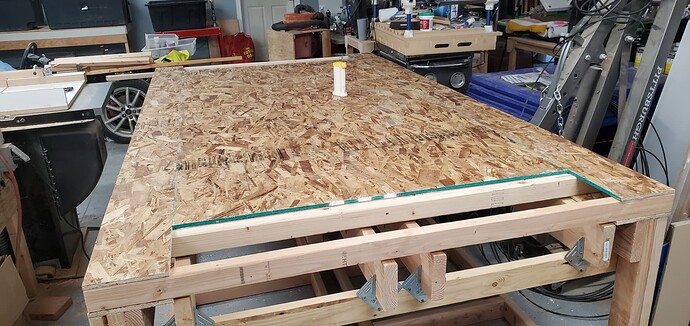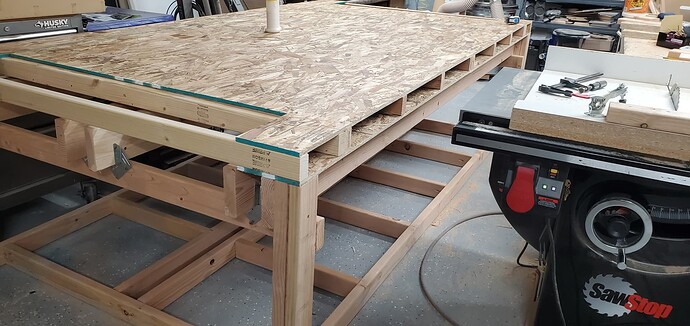Finally finished something. I really liked the idea of making my own boards by laminating plywood, but it would have added more to the cost than I wanted to. Still turned out pretty good I think. Definitely adequate for everything I want to do.
The only racking turns out to be in the legs along the short side, but I REALLY have to push, like trying to move it, and even then it’s only a little bit. I can lean on it and not be gentle, and its solid. Easily the biggest and best worktable I’ve built, which really isn’t saying much…but it’s something.
In retrospect, I probably shouldn’t have glued down the top sheet, since that would have been a convenient spoilboard. Somewhere during the build I got the idea of throwing mdf on it like we’re used to, but it didn’t occur to me that it would get in the way of the tablesaw outfeed. Also would make using the table as a workbench pretty awkward. I’ll probably just remove the screws and cut down to the osb until it’s time to remove it, then I’ll make the LR cut it all down to the timber and drop in some mdf. That’s a good enough plan.

